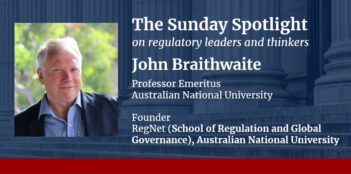
Supreme Court reviews remedy for errors in sentencing range calculations.
Judicial sentencing recently made national headlines after a California state judge gave a lenient six-month sentence to a Stanford student who was convicted of three felony counts of sexual assault. The sentence sparked public outrage, especially in light of the fact that the prosecutors had initially sought a six-year sentence in state prison.
Sentencing guidelines are advocated to solve problems of both unduly lenient sentences as well as overly harsh ones. The federal courts, for example, must consult sentencing guidelines when deciding how long convicted felons will spend time in federal prison.
By establishing guidelines for uniform sentences for individuals convicted of the same offense, the federal courts aim to prevent sentencing disparities and inequities.
In its last term, the Supreme Court took up the case of Molina-Martinez v. United States, which involved a claim that a federal court had misapplied the guidelines when sentencing the petitioner, Saul Molina-Martine.
When determining a defendant’s sentence, the federal guidelines consider the defendant’s conviction, past criminal history, personal characteristics such as education and employment history, and the available sentencing options for the particular crime. Molina-Martinez pled guilty to being unlawfully present in the United States after an aggravated felony conviction, and based on all the relevant factors, the appropriate sentence for Molina-Martinez ranged from 70 to 87 months.
However, at the time of sentencing, the Probation Office responsible for computing the sentencing range imposed 11 criminal history points on Molina-Martinez when the correct number was five. The extra six criminal history points resulted in a sentencing range of 77 to 96 months. The trial judge ultimately ordered a 77-month prison term.
On appeal, the U.S. Court of Appeals for the Fifth Circuit found no fault with the sentence, despite the Probation Office’s error. The court held that Molina-Martinez would need to provide “‘additional evidence’ to show that the use of the incorrect Guidelines range did in fact affect his sentence.”
The fact that the trial court had sentenced Molina-Martinez to a low-end sentence of 77 months, the court of appeals continued, did not on its own prove that the defendant would have received a similarly low-end sentence of 70 months had the district court used the correct sentencing range.
On appeal, however, the Supreme Court unanimously rejected the Fifth Circuit’s reasoning. In his decision, Justice Kennedy highlighted that this case illustrates the “unworkable nature” of the additional evidence rule, as well as the Fifth Circuit’s failure to consider that in sentencing defendants judges often say very little about their decision and the degree to which the guidelines influenced their judgment.
In Molina-Martinez’s case, the district court said nothing about why it chose the sentence it imposed and only stated that it adopted the (erroneously calculated) guideline application from the Probation Office. The dependence on the sentencing guidelines, Justice Kennedy continued, gave at least a “reasonable probability” that the district court would have opted for the low-end sentence of the correctly calculated range, 70 months, if it had the option.
Justice Alito and Justice Thomas concurred with the outcome in Justice Kennedy’s opinion, but wrote separately to critique that opinion for speculating that most defendants appealing a guidelines error will be able to show a reasonable probability of prejudice, as Molina-Martinez did in this case.
Although district courts have depended heavily on the sentencing guidelines since their adoption in 1984, Justices Alito and Thomas cautioned that in time, “lower courts may increasingly drift away from the guidelines and back toward the sentencing regime that prevailed prior to their issuance.”
In his opinion for the Court, Justice Kennedy concluded that in the ordinary case, the sentencing guidelines accomplish their purpose as a “starting point” for the district court’s sentencing decision. In most cases, therefore, the guidelines will affect the defendant’s prison sentence—which means defendants like Molina-Martinez should be able to assume that the trial court would impose a different prison sentence under the appropriate lower range.
Although relatively few cases ever raise issues of mistaken sentences, the Molina-Martinez decision shows the Supreme Court’s emphasis on the need to correct these sentencing errors, given the substantial rights at stake.
This essay is part of The Regulatory Review’s seven-part series, The Supreme Court’s 2015 Regulatory Term.



